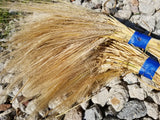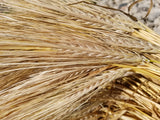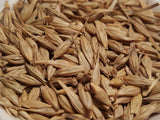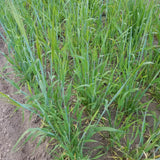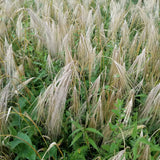This 6-row spring barley makes a beautiful plot of amber waves of grain. An old variety, archeological evidence indicates Bere was grown by Viking farmers in Scotland and the Orkney Islands in the 4th century BC. Later, it became a staple in the camps of 5th century Roman Legionnaires. In our modern days it is associated with craft beer and whisky in Scotland. A landrace cultivar that is now multi-generational on our southeast Michigan homestead, Bere is well adapted to a short growing season of the high latitudes, with long daylight hours and low pH soils.
Traditionally Bere has also been used for making bread, biscuits and bannock. I do not know how they handled removing the hulls, perhaps by sifting? The stalks were used for animal feed and thatch.







